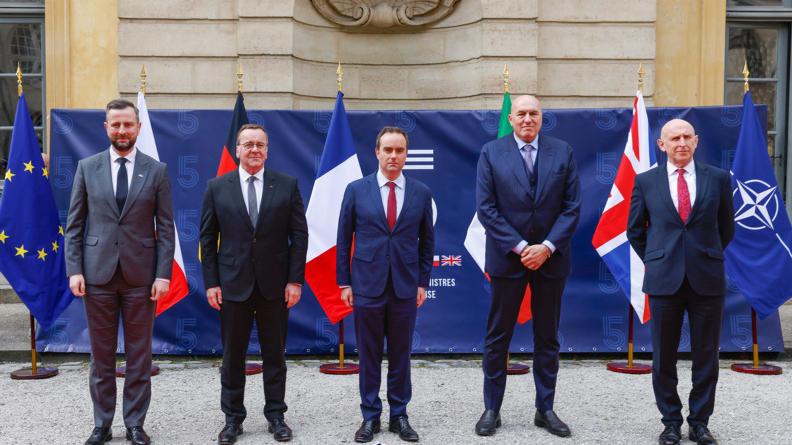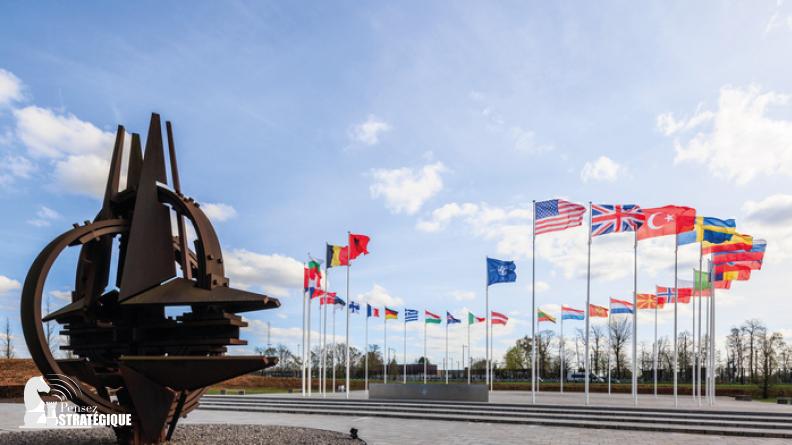Artillery coalition “helping Ukraine built its future artillery”
Major-General Jean-Michel Guilloton took the lead of the “Artillery for Ukraine” coalition launched on 18th January by the Armed Forces Minister, Mr Sébastien Lecornu. During the Armed Forces Ministry’s press conference, Major-General Guilloton presented this coalition, the aim of which is to reinforce the military support to Kiev. Interview.
In what way did the conflict in Ukraine change things in the artillery domain?
Between the first Gulf War in 1991 and the triggering of the war in Ukraine, we have experienced a cycle of asymmetrical conflicts. These counter-insurgency and counter-terrorism missions mobilised rather the special forces, the light infantry and intelligence, against an opponent consisting more in terrorists in pick-up trucks rather than in armoured forces.
The Russian invasion of Ukraine brings us back to a “high-intensity conflict”, with the use of mechanised and armoured forces, massively supported by the artillery, as we used to see until the end of the Cold War. An air-defence artillery to protect the armoured forces, but also field artillery to support the manoeuvre. Mass has once again become one of the keys to success, both in terms of number of guns and in tons on shells. Besides, the stabilisation of the Ukrainian front requires an increased use of the artillery to attack the opponent. In addition to that, there is a new phenomenon, compared with the two world wars: the ability to strike in the depth. Today, the artillery is not only made up of guns or mortars, but also of very long-range rocket-launchers, with some systems having a range up to 150 kilometres. It is therefore a great comeback for the artillery.
Ukraine: the artillery coalition has been launched
Read the articleWhat is the “Artillery for Ukraine” capability coalition and what are its missions?
The artillery coalition is a way to better structure the support given by Ukraine’s allies. Immediately after the Russian invasion, the States the c. fifty members of the Ukraine Defense Contact Group (also called the “Ramstein format”) rapidly provided their support, but in an uncoordinated way decided on 19th September 2019, upon US proposal, to create large capability coalitions. They are divided into large operational functions. Among them: air forces, maritime security, air defence, armoured vehicles and field artillery. Their purpose is to organise western support and the Ukrainian needs to make them match as much as possible in the operational domain.
Which Ukrainian needs will it meet?
There are two timeframes to our mission: a short-term and a long-term one. Our first objective is to meet the Ukrainians urgent needs. It currently mainly consists in ammunition, in order to counterbalance the force ratio which is close to 1 to 6 in favour of the Russians. It means that, when six Russian shells fall on Ukrainian positions, the Ukrainians can only retaliate with one shell. The second urgent need pertains to maintenance, to make broken down equipment operational again.
In the longer run, our goal is to help Ukraine develop its future artillery and to bring it closer to NATO standards. It requires a deep transformation because their artillery uses many guns dating back from the Soviet era. Along that line, we need to train the gunners to use the equipment we gave them, but we also need to train maintenance experts, platoon leaders, staff officers as well as chain and targeting specialists.
How is this coalition concretely organised?
France is lead nation for this coalition and the United States are co-leaders. The Ukrainian party is also represented to confirm its needs. This is a key point. The rest is organised in four sub-groups, following a capability-based approach: weapon systems, ammunition, environment and training. The goal is to have a vision of all the aspects of an operational function.
Why did France take the lead of this coalition?
The artillery is part and parcel of the French History. We can trace it back to Louis XIV and the creation of the first artillery regiment in 1671. This regiment is, by the way, currently in charge of the training of Ukrainians gunners to the employment of the GMLRS. To that historic dimension, one must add industrial excellence. Nexter is a good example of this, with the manufacturing of the Caesar gun. For me, this gun is the best possible compromise between mobility, protection, firepower, range and accuracy. And finally, France can legitimately head this coalition owing to the artillery equipment it gave to Ukraine: about thirty Caesar guns, while we only owned 75, four GMLRSs, TRF1 towed 155 mm guns and 120 mm mortars.
Featured
Ukraine: E5 defence ministers reassert their support
As the conflict in Ukraine continues, the defence ministers of the E5 group (France, Germany, Poland, Italy...
March 14, 2025

NATO Ambassadors Visit Istres Air Force Base
On 6 March 2025, the ambassadors from the NATO (North Atlantic Treaty Organisation) Allies visited the Istr...
March 10, 2025

[Podcast] 75 Years of NATO: The Transatlantic Relationship Standing the Test of Time [2/2]
The war in Ukraine has refocused the North Atlantic Treaty Organisation (NATO) on its primary mission: the ...
July 11, 2024
